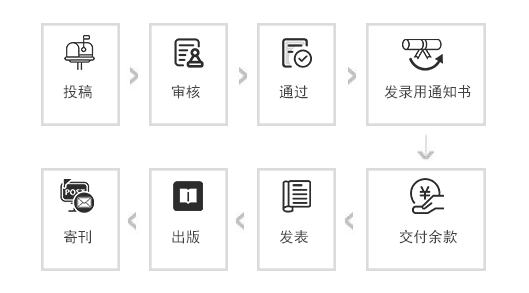IET Biometrics



- 中国知网数据库(CNKI)全文收录期刊
- 中国核心期刊(遴选)数据库收录期刊
- 中国万方数据库全文收录期刊
- 中国维普科技期刊数据库收录期刊
- 中国龙源数据库全文收录期刊
- 中国期刊网全文收录期刊



中国高校科技期刊研究会第9次会员代表大会在北京召开,中宣部出版局副局长张怀海、教育部科学技术与信息化司一级巡视员张国辉等领导出席会议并发表..
英文简介:The field of biometric recognition - automated recognition of individuals based on their behavioural and biological characteristics - has now reached a level of maturity where viable practical applications are both possible and increasingly available. The biometrics field is characterised especially by its interdisciplinarity since, while focused primarily around a strong technological base, effective system design and implementation often requires a broad range of skills encompassing, for example, human factors, data security and database technologies, psychological and physiological awareness, and so on. Also, the technology focus itself embraces diversity, since the engineering of effective biometric systems requires integration of image analysis, pattern recognition, sensor technology, database engineering, security design and many other strands of understanding.The scope of the journal is intentionally relatively wide. While focusing on core technological issues, it is recognised that these may be inherently diverse and in many cases may cross traditional disciplinary boundaries. The scope of the journal will therefore include any topics where it can be shown that a paper can increase our understanding of biometric systems, signal future developments and applications for biometrics, or promote greater practical uptake for relevant technologies:Development and enhancement of individual biometric modalities including the established and traditional modalities (e.g. face, fingerprint, iris, signature and handwriting recognition) and also newer or emerging modalities (gait, ear-shape, neurological patterns, etc.)Multibiometrics, theoretical and practical issues, implementation of practical systems, multiclassifier and multimodal approachesSoft biometrics and information fusion for identification, verification and trait predictionHuman factors and the human-computer interface issues for biometric systems, exception handling strategiesTemplate construction and template management, ageing factors and their impact on biometric systemsUsability and user-oriented design, psychological and physiological principles and system integrationSensors and sensor technologies for biometric processingDatabase technologies to support biometric systemsImplementation of biometric systems, security engineering implications, smartcard and associated technologies in implementation, implementation platforms, system design and performance evaluationTrust and privacy issues, security of biometric systems and supporting technological solutions, biometric template protectionBiometric cryptosystems, security and biometrics-linked encryptionLinks with forensic processing and cross-disciplinary commonalitiesCore underpinning technologies (e.g. image analysis, pattern recognition, computer vision, signal processing, etc.), where the specific relevance to biometric processing can be demonstratedApplications and application-led considerationsPosition papers on technology or on the industrial context of biometric system developmentAdoption and promotion of standards in biometrics, improving technology acceptance, deployment and interoperability, avoiding cross-cultural and cross-sector restrictionsRelevant ethical and social issues中文简介:(来自Google、百度翻译)生物特征识别领域-基于个人的行为和生物学特征对其进行自动识别-现已达到成熟的水平,可行的实际应用既可能又越来越多。生物识别技术领域的特点尤其在于其跨学科性,因为尽管主要集中在强大的技术基础上,但有效的系统设计和实施通常需要广泛的技能,包括人为因素,数据安全和数据库技术,心理和生理意识等。此外,技术焦点本身包含多样性,因为有效的生物识别系统的工程需要图像分析,模式识别,传感器技术,数据库工程,安全设计和许多其他理解的集成。 期刊的范围是有意的相对较宽。在关注核心技术问题的同时,人们认识到这些问题可能具有内在的多样性,并且在许多情况下可能跨越传统的学科界限。因此,该期刊的范围将包括任何主题,可以证明论文可以增进我们对生物识别系统的理解,表明生物识别技术的未来发展和应用,或促进相关技术的更多实际应用: 开发和增强个人生物识别模式,包括既定和传统模式 (例如面部,指纹,虹膜,签名和手写识别) 以及更新或新兴的模式 (步态,耳朵形状,神经系统模式等)。理论和实践问题,实际系统的实现,多分类器和多模态方法 用于识别,验证和特征预测的软生物识别和信息融合 生物识别系统的人为因素和人机界面问题,异常处理策略 模板构建和模板管理,老化因素及其对生物识别系统的影响 可用性和面向用户的设计,心理和生理原理以及系统集成 用于生物识别处理的传感器和传感器技术 支持生物识别系统的数据库技术 生物识别系统的实施,安全工程含义,智能卡和相关技术在实现、实现平台、系统设计和性能评估 信任和隐私问题、生物识别系统的安全性和支持技术解决方案、生物识别模板保护 生物识别密码系统、与安全和生物识别相关的加密 与取证处理和跨学科共性的链接 核心基础技术 (例如图像分析,模式识别,计算机视觉,信号处理等),可以证明与生物识别处理的特定相关性 应用和应用主导的考虑事项 关于技术或生物识别系统开发的工业背景的立场文件 生物识别标准的采用和推广,提高技术接受度,部署和互操作性,避免跨文化及跨部门限制 相关伦理及社会议题










英文简介:The field of biometric recognition - automated recognition of individuals based on their behavioural and biological characteristics - has now reached a level of maturity where viable practical applications are both possible and increasingly available. The biometrics field is characterised especially by its interdisciplinarity since, while focused primarily around a strong technological base, effective system design and implementation often requires a broad range of skills encompassing, for example, human factors, data security and database technologies, psychological and physiological awareness, and so on. Also, the technology focus itself embraces diversity, since the engineering of effective biometric systems requires integration of image analysis, pattern recognition, sensor technology, database engineering, security design and many other strands of understanding.The scope of the journal is intentionally relatively wide. While focusing on core technological issues, it is recognised that these may be inherently diverse and in many cases may cross traditional disciplinary boundaries. The scope of the journal will therefore include any topics where it can be shown that a paper can increase our understanding of biometric systems, signal future developments and applications for biometrics, or promote greater practical uptake for relevant technologies:Development and enhancement of individual biometric modalities including the established and traditional modalities (e.g. face, fingerprint, iris, signature and handwriting recognition) and also newer or emerging modalities (gait, ear-shape, neurological patterns, etc.)Multibiometrics, theoretical and practical issues, implementation of practical systems, multiclassifier and multimodal approachesSoft biometrics and information fusion for identification, verification and trait predictionHuman factors and the human-computer interface issues for biometric systems, exception handling strategiesTemplate construction and template management, ageing factors and their impact on biometric systemsUsability and user-oriented design, psychological and physiological principles and system integrationSensors and sensor technologies for biometric processingDatabase technologies to support biometric systemsImplementation of biometric systems, security engineering implications, smartcard and associated technologies in implementation, implementation platforms, system design and performance evaluationTrust and privacy issues, security of biometric systems and supporting technological solutions, biometric template protectionBiometric cryptosystems, security and biometrics-linked encryptionLinks with forensic processing and cross-disciplinary commonalitiesCore underpinning technologies (e.g. image analysis, pattern recognition, computer vision, signal processing, etc.), where the specific relevance to biometric processing can be demonstratedApplications and application-led considerationsPosition papers on technology or on the industrial context of biometric system developmentAdoption and promotion of standards in biometrics, improving technology acceptance, deployment and interoperability, avoiding cross-cultural and cross-sector restrictionsRelevant ethical and social issues中文简介:(来自Google、百度翻译)生物特征识别领域-基于个人的行为和生物学特征对其进行自动识别-现已达到成熟的水平,可行的实际应用既可能又越来越多。生物识别技术领域的特点尤其在于其跨学科性,因为尽管主要集中在强大的技术基础上,但有效的系统设计和实施通常需要广泛的技能,包括人为因素,数据安全和数据库技术,心理和生理意识等。此外,技术焦点本身包含多样性,因为有效的生物识别系统的工程需要图像分析,模式识别,传感器技术,数据库工程,安全设计和许多其他理解的集成。 期刊的范围是有意的相对较宽。在关注核心技术问题的同时,人们认识到这些问题可能具有内在的多样性,并且在许多情况下可能跨越传统的学科界限。因此,该期刊的范围将包括任何主题,可以证明论文可以增进我们对生物识别系统的理解,表明生物识别技术的未来发展和应用,或促进相关技术的更多实际应用: 开发和增强个人生物识别模式,包括既定和传统模式 (例如面部,指纹,虹膜,签名和手写识别) 以及更新或新兴的模式 (步态,耳朵形状,神经系统模式等)。理论和实践问题,实际系统的实现,多分类器和多模态方法 用于识别,验证和特征预测的软生物识别和信息融合 生物识别系统的人为因素和人机界面问题,异常处理策略 模板构建和模板管理,老化因素及其对生物识别系统的影响 可用性和面向用户的设计,心理和生理原理以及系统集成 用于生物识别处理的传感器和传感器技术 支持生物识别系统的数据库技术 生物识别系统的实施,安全工程含义,智能卡和相关技术在实现、实现平台、系统设计和性能评估 信任和隐私问题、生物识别系统的安全性和支持技术解决方案、生物识别模板保护 生物识别密码系统、与安全和生物识别相关的加密 与取证处理和跨学科共性的链接 核心基础技术 (例如图像分析,模式识别,计算机视觉,信号处理等),可以证明与生物识别处理的特定相关性 应用和应用主导的考虑事项 关于技术或生物识别系统开发的工业背景的立场文件 生物识别标准的采用和推广,提高技术接受度,部署和互操作性,避免跨文化及跨部门限制 相关伦理及社会议题
来稿要求:
论点新颖、论证严密、论据充足、文字精练。论文字数:5000字符-8000字符为宜,图表也要计算在内,不包括英文摘要关键词。
标 题:
文章标题要言简意赅,30字以内。作者署名:署真实姓名,注明作者单位、单位所在省市和邮政编码。摘 要:要用第三人称概括全文,300字以内。
关 键 词:
用3~8个关键词术语反映论文主题。专用符号:名词、术语、数字、计量单位、标点符号和数学符号等,必须符合国家标准;外文人名、地名和术语需译成中文。
图表格式:
文中插图与表格放在相应正文之后,分别按出现顺序用图1、图2或表1、表2统一编号。插图应为黑白色,其序号、标题及注释居中放在图的下方,表格的序号及标题置于表格上方,表注放在表格的下方(建议:由于篇幅限制,除核心期刊外尽量不用或少用图表)。
正文注释:
采用尾注形式,注释号①,②,③等标在相应正文右上角。
章节体例:
章节标题为:一级标题不编号,用黑体居中排,二级标题不编号,用楷体放在相应的文字段首与正文空一字格接排正文。 三级标题分别用1.2.3.顺序编号。文中接排标题用(1),(2)编号。
参考文献:
参考文献置于正文之后,近5年的不少于3条,用[1],[2]……顺序编号,如文章中有内容需要解释请用尾注形式。参考文献不全者不能进入审稿阶段。{参考文献格式如下:(1)图书:作者.书名(版本)[M].出版所在地: 出版社,出版年:(1)页码.
(2)期刊:作者.题目[J].期刊名,年,卷(期):页码.
(3)电子参考文献:作者.题目[OL].(文章的发表日期).[本文引用日期].作者简介:来稿者请附个人简介,内容包括姓名(出生年—),性别,籍贯,民族,学历,工作单位,职称,研究方向,通讯地址,联系电话及电子信箱。
一般情况下,您将在3个工作日内收到审稿结果。如文章有很强的时效性,请说明需要最晚刊发时间。
| 论文编号 | 作者姓名 | 论文题目 | 录用情况 |
|---|---|---|---|
| TG251-13579 | 韩丽炘 孟涛 温娟娟 刘晓琴 | 基于互联网的CBL+TBL教学法在病理学实验教学中的应用 | 已录用 |
| TG251-13681 | 邹隆强 杨清余 钟鸿路 李正南 陈 | 医学运动康复联合消肿止痛方治疗急性踝关节扭伤临床研究 | 已录用 |
| TG251-13794 | 林雨慧 陈霄雯 郑颖彦 朱永凯 贾 | 基于SWOT模型的儿童专科医院临床研究发展策略分析 | 已录用 |
| TG251-13762 | 郑鸿雁 | 重复经颅磁刺激治疗肝脾不调型功能性肛门直肠痛的临床研究 | 已录用 |
| TG251-13891 | 袁召1 赵会谢2 赵海深3 | 真武汤治疗阳虚水泛型慢性心力衰竭患者的临床研究 | 已录用 |
| TG251-13536 | 王杰1 张蕾蕾2 | 血脂和载脂蛋白水平与分化型甲状腺癌及其病理学特征的相关性探究 | 已录用 |
| GD24-5203 | 单一青 高鹏慧 姚瑶 | 思维导图护理对宫颈癌患者行腹腔镜术后康复的影响 | 已录用 |
| GD24-5217 | 林秀娟 梁静文 刘美仙 陈惠贤 | 加速康复外科管理模式在胸腔镜肺段切除术患者围手术期护理中的应用效果 | 已录用 |
| GD24-5213 | 杨素雯 何洁芳 陈妙霞 廖景升 | 健康行为改变整合理论对于宫颈癌晚期放疗患者依从性及自我效能的影响 | 已录用 |
| GD24-5199 | 杨月惠 王凤婷 | 个体护理计划在心脏瓣膜置换手术围手术期患者中的应用 | 已录用 |
邮箱:cnkibianjibu@163.com
QQ:
扫码联系: